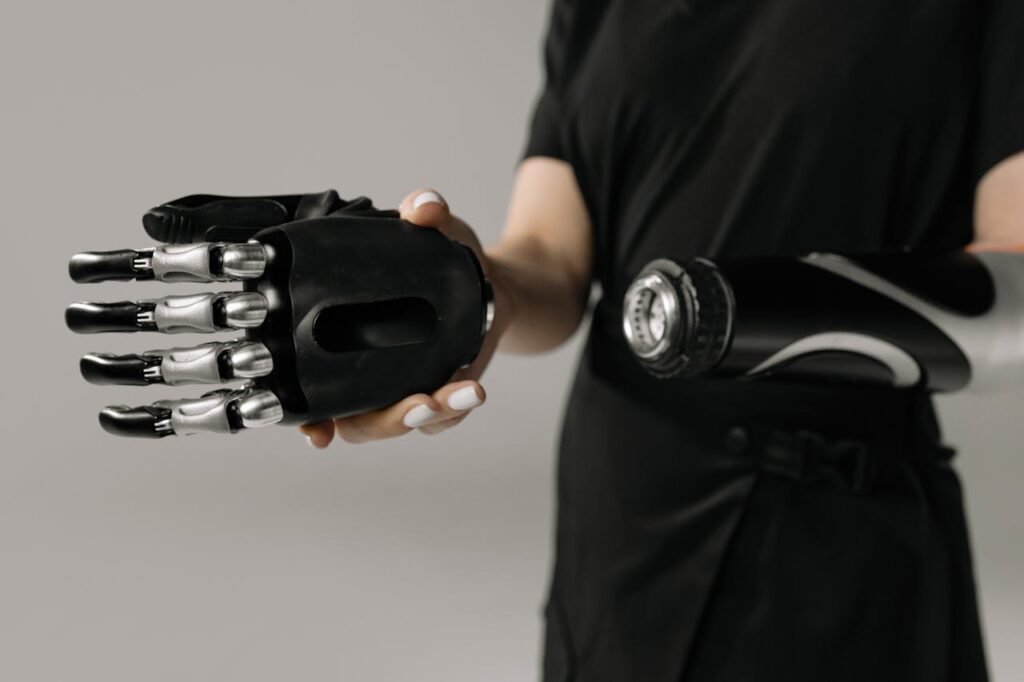Prosthetic limbs are not just tools for mobility—they are gateways to an active, independent, and fulfilling lifestyle. For individuals who engage in high-impact activities, such as running, hiking, or competitive sports, the right prosthetic can mean the difference between frustration and freedom. Selecting a prosthetic for these demanding activities requires careful consideration of design, materials, and technology to ensure safety, durability, and performance.
This guide is designed to help you navigate the unique challenges of choosing a prosthetic limb for high-impact activities. Whether you’re a seasoned athlete or someone exploring new physical challenges, understanding the key features and factors in prosthetic design can help you make an informed decision that supports your goals and enhances your experience.
Understanding the Demands of High-Impact Activities
High-impact activities place significant stress on the body, requiring prosthetic limbs that can handle dynamic forces, repetitive movements, and varied environments. Unlike everyday use, these activities demand advanced technology and engineering to deliver stability, flexibility, and power without compromising comfort.
The Role of Biomechanics in High-Impact Prosthetics
The biomechanics of high-impact activities differ greatly from routine tasks like walking or standing. Running, for example, involves rapid acceleration and deceleration, while sports like basketball or tennis require quick lateral movements and jumps. A prosthetic limb must replicate these motions while absorbing the associated shocks to protect the user’s residual limb and joints.
For businesses, understanding the nuances of biomechanics is crucial in designing prosthetics that not only perform well but also minimize injury risk.
Collaborating with biomechanics experts or conducting gait analysis during the design phase ensures that your products meet the rigorous demands of high-impact activities.
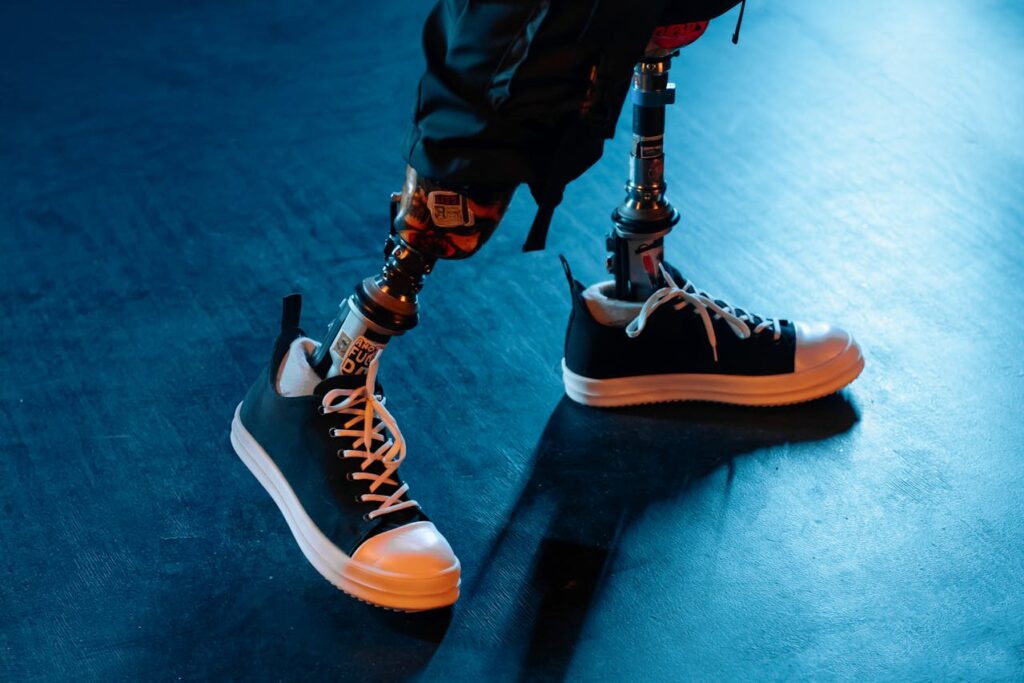
Balancing Performance and Comfort
While performance is paramount in high-impact prosthetics, comfort cannot be overlooked. A prosthetic that fits poorly or causes irritation will hinder the user’s performance and may lead to long-term physical issues. Achieving the right balance between performance and comfort requires precision in fitting, material selection, and design.
For users, this means prioritizing a prosthetic that feels like an extension of their body. For businesses, offering personalized fitting sessions and ongoing support helps ensure that users get the most out of their prosthetic while staying comfortable during intense activities.
Key Features to Look for in High-Impact Prosthetics
Selecting a prosthetic limb for high-impact activities involves understanding the features that contribute to its durability, flexibility, and responsiveness. These features are essential for enabling users to perform at their best while reducing the risk of injury or wear.
Advanced Materials for Strength and Lightness
High-impact prosthetics are built with advanced materials like carbon fiber, titanium, and aerospace-grade aluminum, which provide the necessary strength to handle intense forces without adding unnecessary weight. The lightweight nature of these materials reduces strain on the user’s body, enabling longer, more comfortable activity sessions.
For businesses, emphasizing the benefits of these materials in marketing and consultations can highlight the value of your products. Providing demonstrations or case studies showcasing their performance in real-world scenarios can further build user confidence.
Shock Absorption and Energy Return
One of the most critical aspects of high-impact prosthetics is their ability to absorb shock and return energy efficiently. This is particularly important in activities like running or jumping, where the prosthetic must reduce the impact on the user’s residual limb while propelling them forward.
For example, running blades are designed with curved, spring-like structures that store and release energy with each step, mimicking the natural push-off motion of a biological foot.
Businesses that invest in developing and refining such technology can offer cutting-edge solutions that appeal to both recreational users and professional athletes.
Stability and Adaptability for Varied Terrain
High-impact activities often take place on diverse surfaces, from running tracks and gym floors to rocky trails and sandy beaches. A prosthetic designed for these activities must provide stability and adaptability, ensuring users feel secure and confident no matter where they are.
Multi-Axis Joints for Enhanced Mobility
Prosthetic joints with multi-axis movement allow for greater adaptability on uneven terrain. These joints mimic the natural motion of human limbs, enabling users to maintain balance during activities like hiking, trail running, or climbing. By dynamically adjusting to shifts in terrain, multi-axis joints reduce strain on the residual limb and improve overall performance.
For businesses, incorporating multi-axis technology into prosthetics can differentiate your products from competitors. Highlighting these features in product descriptions or user demonstrations helps potential buyers understand the enhanced mobility and safety they provide.
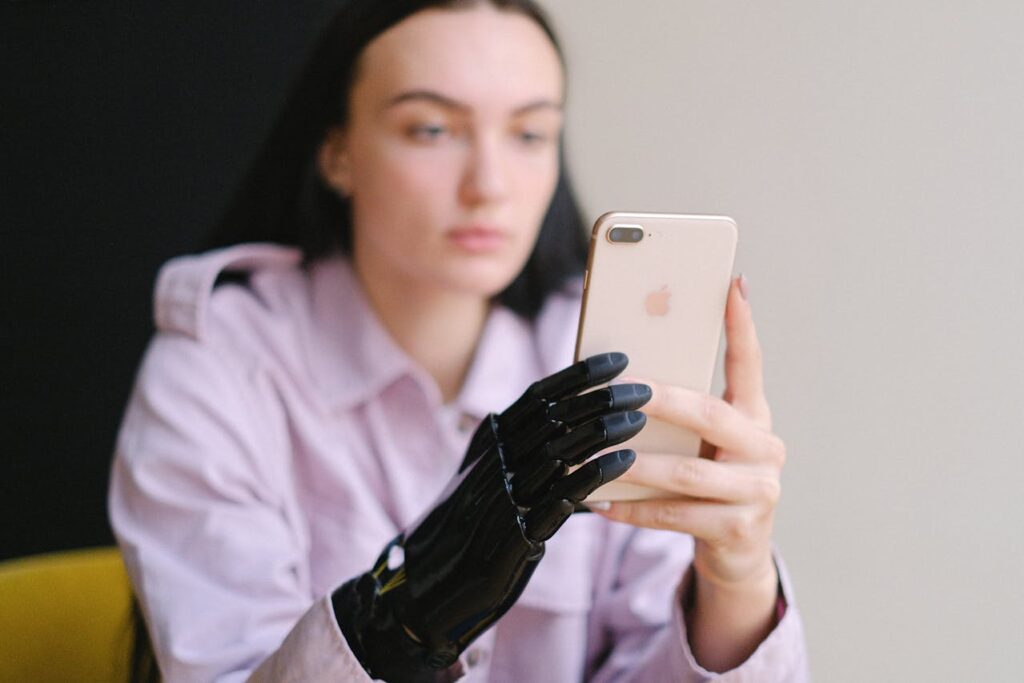
Customizable Treads and Attachments
The terminal end of a prosthetic limb plays a vital role in ensuring traction and grip on various surfaces. For high-impact activities, interchangeable treads or specialized attachments can provide users with the confidence to tackle wet, slippery, or uneven ground.
For businesses, offering a range of terminal options tailored to specific activities or terrains adds versatility to your product line. Demonstrating how these attachments function in real-world conditions can appeal to users with adventurous lifestyles or diverse athletic pursuits.
The Importance of a Secure and Comfortable Socket
The socket is the interface between the user’s residual limb and the prosthetic, making it one of the most critical components for both performance and comfort. A well-fitted socket ensures stability during high-impact activities, reducing the risk of chafing, pressure sores, or discomfort.
Dynamic Socket Designs
High-impact prosthetics benefit from sockets designed to accommodate changes in residual limb volume, which can occur due to sweat, temperature fluctuations, or prolonged activity. Dynamic sockets, which use adjustable liners or vacuum-sealing technology, maintain a secure fit throughout the day.
For businesses, investing in dynamic socket technology can improve user satisfaction and performance. Educating users on how these systems work and offering personalized fittings ensures they can take full advantage of this innovation.
Advanced Materials for Comfort
The materials used in socket liners significantly affect comfort and performance. Silicone, gel, and breathable fabrics provide cushioning and reduce friction, making them ideal for high-intensity use. Additionally, moisture-wicking materials prevent excessive sweating, which can lead to discomfort or skin issues.
For businesses, offering multiple liner options and allowing users to test different materials during fittings ensures a tailored solution. Providing care instructions for maintaining the socket’s integrity over time helps users extend its lifespan while enjoying optimal comfort.
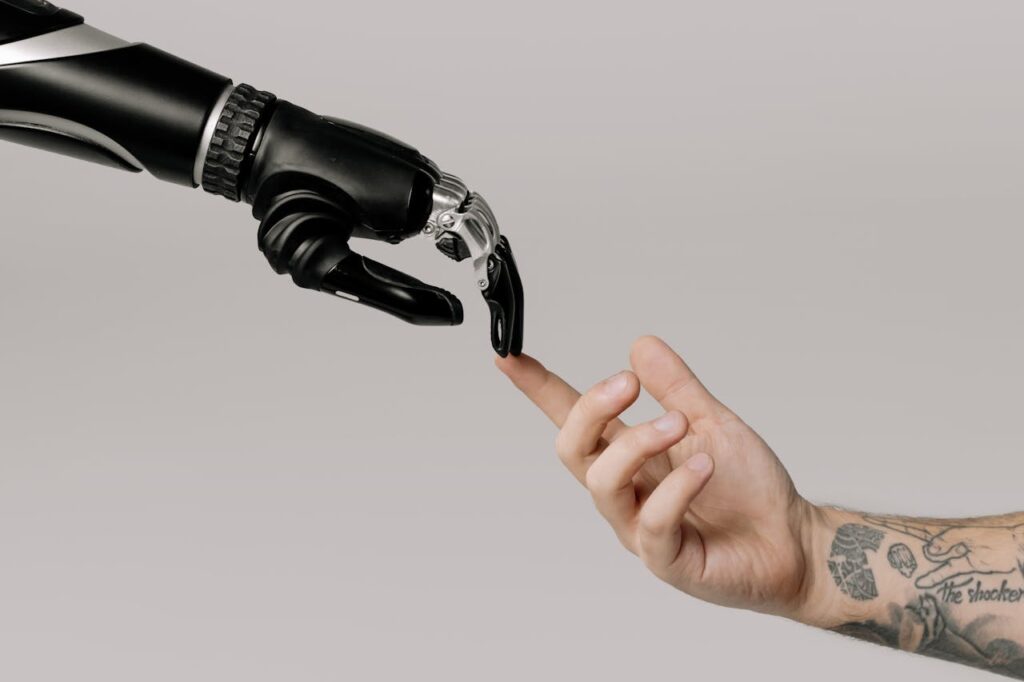
Training and Rehabilitation for High-Impact Prosthetics
Using a prosthetic for high-impact activities requires more than just the right device—it also involves proper training and rehabilitation to ensure users can operate their prosthetic safely and effectively.
Building Strength and Endurance
High-impact activities demand physical strength and endurance, particularly for users adapting to a new prosthetic. Rehabilitation programs that focus on strengthening the residual limb, core muscles, and overall fitness prepare users for the rigors of their chosen activities.
For businesses, partnering with rehabilitation centers or offering in-house training programs demonstrates a commitment to user success. Providing access to professional trainers or physical therapists familiar with prosthetic use can enhance user confidence and performance.
Developing Technique and Coordination
Activities like running, jumping, or lifting weights require precise technique to avoid strain or injury. Prosthetic users often need to learn new movement patterns to compensate for the device’s mechanics. Specialized training sessions can help users refine their technique, improving efficiency and reducing the risk of overuse injuries.
For businesses, offering workshops or instructional videos tailored to specific activities provides valuable support to users. Collaborating with athletes or coaches experienced in prosthetic use can further enhance the quality and relevance of these resources.
The Role of Technology in High-Impact Prosthetics
Advancements in technology are driving the evolution of high-impact prosthetics, making them smarter, more responsive, and better suited to meet the demands of active users. From sensor-driven adjustments to AI-powered movement optimization, technology is redefining what’s possible in performance and comfort.
Smart Prosthetics for Real-Time Adaptation
High-impact prosthetics are increasingly incorporating sensors and microprocessors that analyze movement in real-time. These devices adjust to changes in speed, terrain, and force, enabling smoother transitions and enhanced stability.
For example, a microprocessor-controlled knee can detect a sudden incline and adjust resistance accordingly, preventing falls and improving efficiency.
For businesses, investing in smart prosthetics positions your products at the forefront of innovation. Demonstrating these features in user trials or through interactive marketing campaigns helps potential buyers visualize their benefits in action. Providing user-friendly apps or interfaces for monitoring and adjusting smart prosthetics adds further value.
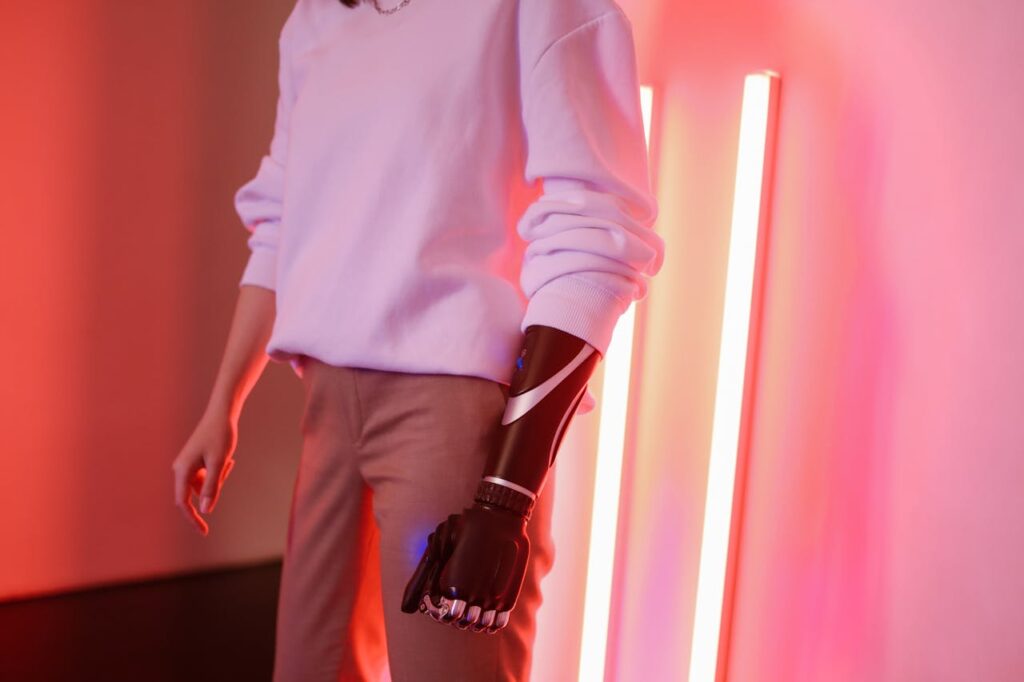
Enhancing Energy Efficiency
Energy efficiency is a critical factor for prosthetic users engaging in high-impact activities. Advanced designs focus on optimizing energy return, ensuring users expend less effort during activities like running or jumping.
Innovations such as energy-storing springs or responsive carbon fiber blades mimic the natural recoil of biological limbs, enabling smoother, more efficient motion.
For businesses, collaborating with engineers and material scientists to refine energy-efficient designs can create a competitive edge. Educating users about the mechanics behind energy return and its benefits helps them make informed decisions when selecting a prosthetic.
Long-Term Maintenance and Durability
High-impact activities place significant wear and tear on prosthetic limbs, making durability and maintenance key considerations for users and manufacturers alike. Ensuring that prosthetics remain reliable and functional over time requires robust design, quality materials, and accessible support services.
Designing for Longevity
Durability is a cornerstone of high-impact prosthetic design. Components must withstand repeated stress without compromising performance. Materials such as aerospace-grade aluminum or reinforced carbon fiber are often used to ensure longevity, while modular designs allow users to replace worn components without discarding the entire device.
For businesses, prioritizing durability in the design and production process enhances user satisfaction and trust. Offering warranties or maintenance packages tailored to high-impact prosthetics reassures users that their investment is protected.
Accessible Maintenance Services
Regular maintenance is essential to keep high-impact prosthetics in peak condition. Users need easy access to services such as realignment, component replacement, or socket adjustments. Providing detailed maintenance guides or scheduling reminders can help users stay proactive about caring for their device.
For businesses, creating a network of service centers or offering remote support options ensures users can address issues quickly and conveniently. Partnering with local clinics or prosthetists to provide routine check-ups further enhances user confidence and loyalty.
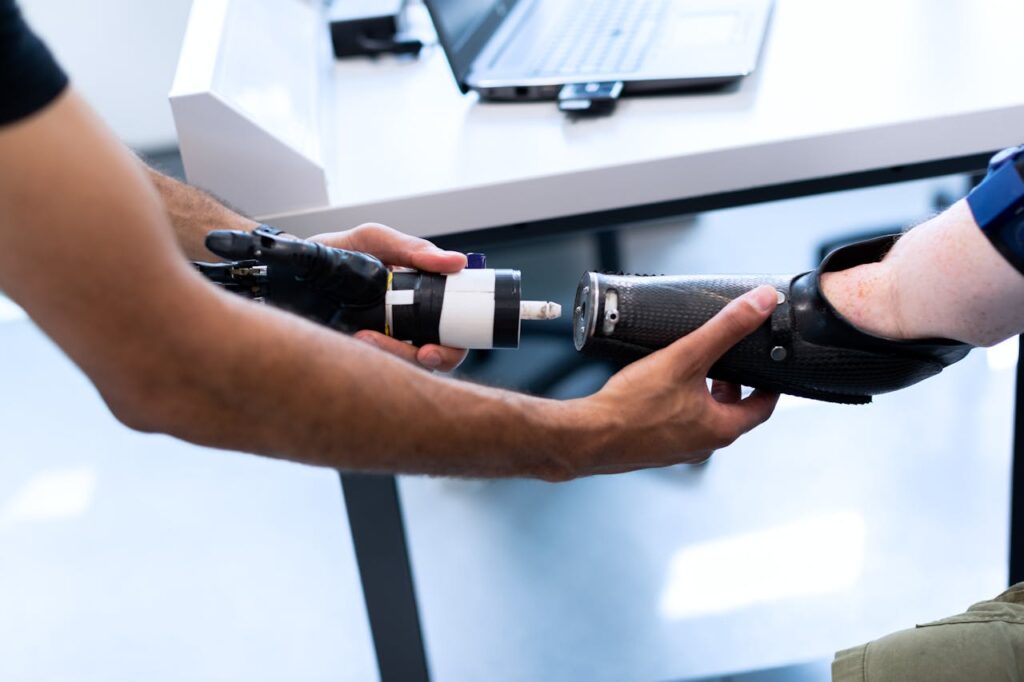
Addressing the Realities of Wear and Tear
Prosthetic limbs, like any device subjected to daily use, experience wear and tear over time. The extent of this wear depends on various factors, including the user’s activity level, the materials used in the prosthetic, and the environmental conditions it’s exposed to. High-impact activities, frequent use in harsh environments, or prolonged exposure to moisture can accelerate the degradation of components.
For businesses, acknowledging these realities in marketing materials and consultations is essential. Transparency about the expected lifespan of specific components, along with actionable advice on their care, helps manage user expectations and reinforces credibility.
Recommending regular check-ups or providing maintenance schedules ensures users are proactive in addressing minor issues before they escalate.
The Role of Materials in Durability
The materials used in a prosthetic limb are directly tied to its durability. Reviews often highlight whether the materials meet the demands of the user’s lifestyle, such as lightweight carbon fiber for active individuals or titanium for those requiring robust, long-lasting solutions.
Prosthetics crafted with subpar materials may receive negative reviews, particularly when components fail prematurely.
For businesses, strategically sourcing high-quality materials and testing them rigorously can safeguard against these concerns. Collaborating with material scientists or leveraging emerging technologies, like 3D printing for durable parts, adds value to your products. Educating users about the materials in their prosthetic and why they were chosen builds confidence in your brand.
Enhancing Maintenance Services
Durability is intrinsically linked to maintenance. Even the most well-built prosthetic limbs require routine care to ensure they function optimally. Reviews often reflect the quality of maintenance services provided by the manufacturer or associated clinics.
Users frequently highlight whether the business offers accessible repair options, spare parts availability, and effective customer support.
For businesses, streamlining maintenance services and creating a seamless user experience are actionable strategies. Offering service plans tailored to different user needs, from active athletes to those with low-impact lifestyles, ensures every customer feels supported.
Digital platforms for scheduling maintenance, tracking service history, or ordering replacement parts add convenience and enhance the customer journey.
Leveraging Data-Driven Insights
Businesses can also utilize customer feedback and reviews to identify recurring issues in durability or maintenance. For instance, if multiple users report similar complaints about a particular component failing prematurely, this data should inform future design improvements.
Proactively addressing these concerns and communicating the changes made based on user feedback showcases a commitment to continuous improvement.
Highlighting these updates in marketing campaigns or product descriptions can turn potential concerns into selling points, demonstrating that your company listens to and values its customers.
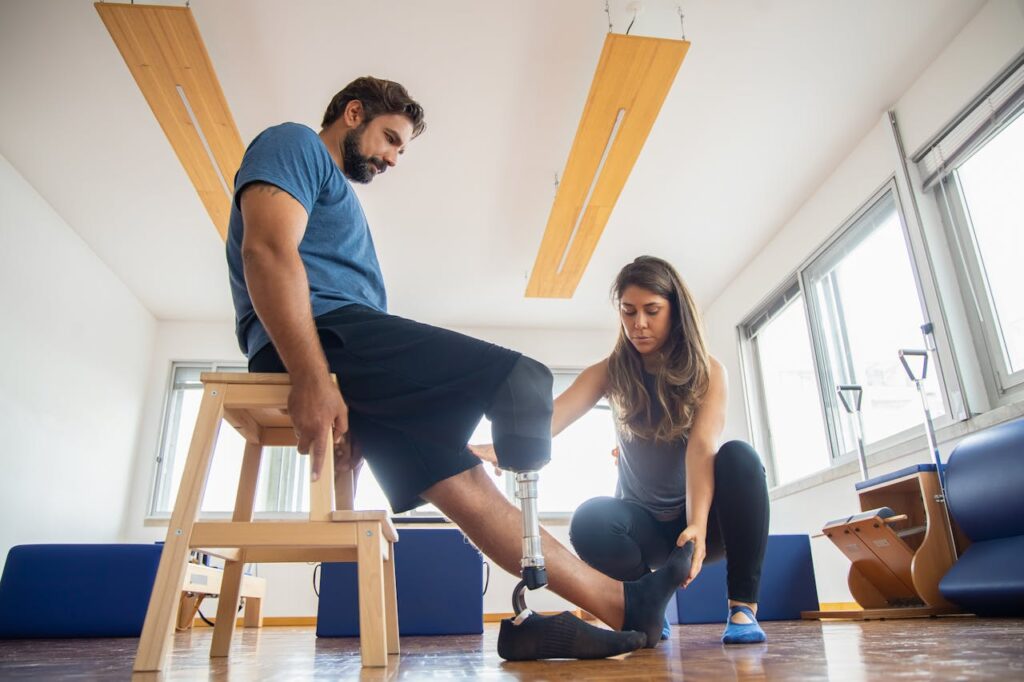
Promoting Longevity Through User Education
User reviews often reflect frustrations that stem from a lack of understanding about proper prosthetic care. Issues like premature wear, socket discomfort, or reduced performance may be preventable with the right knowledge.
Businesses can preempt negative reviews by equipping users with the tools and information needed to maintain their prosthetics effectively.
Providing detailed guides, instructional videos, or even mobile apps that offer step-by-step care instructions empowers users to take ownership of their prosthetic’s longevity. Periodic reminders for cleaning, lubrication, or component checks ensure users stay engaged with maintenance routines.
Additionally, offering access to live support or Q&A sessions creates an ongoing dialogue between the business and the user.
Embracing the Future of High-Impact Prosthetics
The field of high-impact prosthetics is rapidly evolving, with emerging technologies and design innovations poised to further enhance user experience and performance. For businesses, staying ahead of these trends is essential to remain competitive and meet the growing demands of active prosthetic users.
Integrating Augmented Reality in Training
Augmented reality (AR) offers exciting possibilities for prosthetic training and rehabilitation. AR-based tools can provide real-time feedback on movement patterns, helping users refine their technique and avoid injury. For example, a runner could use AR glasses to monitor their gait and adjust their stride dynamically.
For businesses, investing in AR technology and integrating it into user training programs demonstrates a commitment to innovation. Collaborating with software developers to create proprietary AR applications tailored to prosthetic users can position your brand as a leader in cutting-edge support.
Expanding Accessibility Through Cost-Effective Solutions
While high-impact prosthetics often require advanced materials and technologies, efforts are underway to make these devices more affordable. Innovations such as 3D printing and open-source design platforms can reduce production costs while maintaining quality.
For businesses, exploring cost-effective manufacturing methods and collaborating with funding organizations or insurance providers can expand access to high-impact prosthetics. Promoting these initiatives as part of your brand identity reinforces a commitment to inclusivity and social responsibility.
Pioneering Customization Through Smart Technology
High-impact prosthetics are moving toward greater integration of smart technology, where sensors and artificial intelligence (AI) enable devices to adapt to user needs in real-time. These technologies are poised to revolutionize how users interact with their prosthetics, providing enhanced control and personalization.
For example, future high-impact prosthetics may include sensors that detect changes in gait, pressure, or terrain, automatically adjusting resistance or energy return to match the activity. This adaptability reduces user fatigue and improves performance, especially for athletes or those engaging in rigorous physical activities.
Businesses that invest in AI-driven design can position themselves at the forefront of this trend, creating prosthetics that learn and grow with the user.
Expanding Applications with Advanced Materials
The materials used in prosthetics are becoming more sophisticated, with innovations like carbon nanotubes, graphene, and bio-engineered composites offering unparalleled strength, flexibility, and weight reduction.
For high-impact prosthetics, these materials can withstand extreme forces while maintaining user comfort and safety.
Businesses can differentiate themselves by prioritizing material innovation and collaborating with material scientists to push the boundaries of what’s possible. Highlighting these advancements in product descriptions or user stories reinforces your brand’s commitment to cutting-edge solutions.
Moreover, ensuring that these materials are sustainably sourced or recyclable aligns with growing consumer demand for environmentally responsible products.
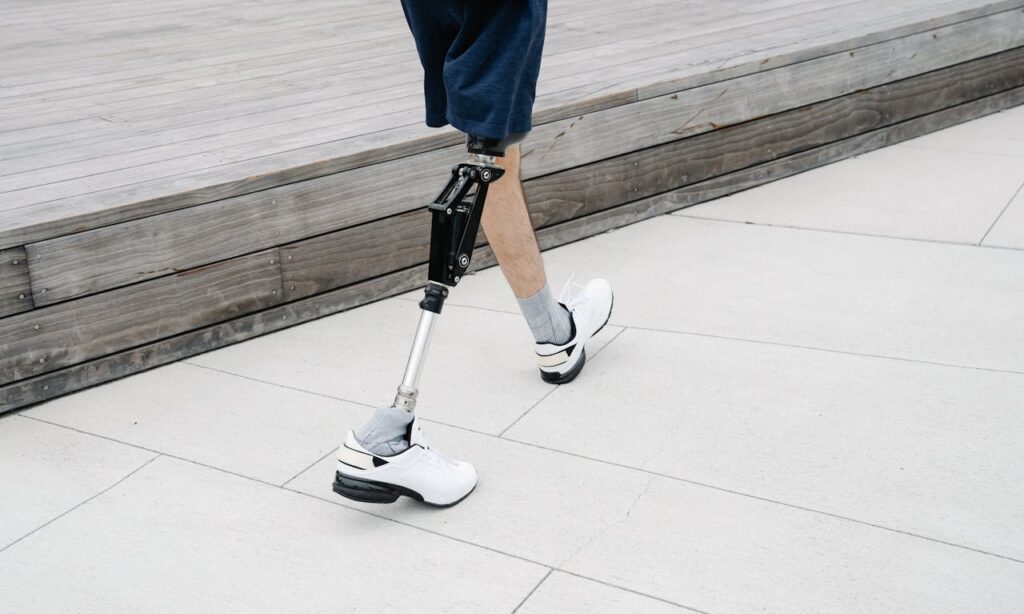
Enhancing User Experiences with Immersive Training
As high-impact prosthetics become more advanced, users require training to maximize their potential. Virtual reality (VR) and augmented reality (AR) technologies are emerging as transformative tools for prosthetic training and rehabilitation.
By creating immersive environments, these technologies allow users to practice complex movements, refine their technique, and gain confidence in using their prosthetics.
Businesses that embrace VR and AR as part of their prosthetic offerings can create comprehensive ecosystems that support users from the moment they receive their device. For example, a user could access an AR training app to visualize the optimal stride for running with a blade prosthetic, or engage in a VR simulation to practice navigating uneven terrain.
Investing in these technologies not only enhances the user experience but also fosters a deeper connection between the brand and its customers. Partnering with tech developers or creating proprietary software ensures that your business leads in this evolving space.
Conclusion
Choosing the right prosthetic for high-impact activities is about more than just performance—it’s about enabling users to live without limitations, pursue their passions, and achieve their goals. For users, the decision involves evaluating factors like durability, comfort, and adaptability, while staying informed about the latest innovations.
For businesses, the opportunity lies in creating prosthetics that not only meet but exceed the expectations of active users. By investing in advanced materials, smart technology, and user-centric designs, companies can deliver solutions that inspire confidence and transform lives.
The future of high-impact prosthetics is bright, driven by relentless innovation and a commitment to improving mobility and independence. Together, users and manufacturers can push the boundaries of what’s possible, ensuring that every step, stride, and leap is taken with strength, confidence, and joy.



